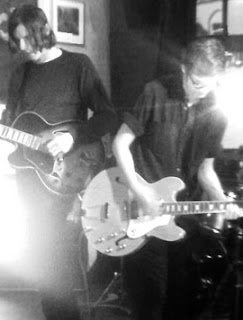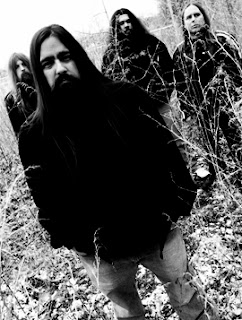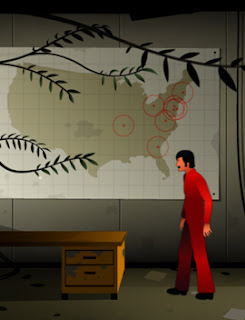Calling themselves the Dead Rabbits, the foursome immediately set out to perfect their live shows, mostly holding off on studio time until 2011 when they released six EPs with London-based Flower Power Records. The EPs received some limited attention. It was enough to keep the band going.
The Ticket That Exploded makes Dead Rabbits stick.
And then the going got slow. Although their EPs were well-received and their live sets good enough to steal the thunder from club headliners, the band didn't make enough to produce a proper LP. Specifically, the band needed a bigger space to lay the album down live. It was the only way to preserve their philosophy of making music — baring their souls without the weight of consequence.
Eventually, it was Hayes who came up with a solution. He searched around until finally finding a studio that was willing to talk about trade. In exchange for Hayes working several weeks as a resident painter and handyman, Ranch Production House Studios was willing to let the Dead Rabbits record a debut named after the novel by William S. Burroughs.
Several of the songs were produced with Greg Swan. Others were mixed in the band's smaller studio. But regardless of where they came together, Dead Rabbits managed to create a brilliantly fuzzy neo-psychedlic album with 11 tracks of hazy bliss.
It's All In Her Head is no exception. The hypnotic drone of the song has become a mainstay placed early in their sets anywhere they play. Much like their beautifully composed sublime rock anthem, Heavenly Way kicks off most shows (and the album), All In Her Head captures the essence of the band.
It's also this essence that sometimes draws some criticism of the debut. Although stunning through most of the album, the consistent shoegaze pace doesn't always hold an interest. A little variation can go a long way, even if the abandon happens to be as it is with Dead Rabbits.
Of course, this is also why some songs like Keep Me Warm hit harder later on. Even the slightest change in sound makes an impact. It's like talking and talking to someone but then tossing in a whisper, which immediately has much more impact. Fortunately, any sameness is short term.
Vanilla Skies, which is a brand new track composed with an assist from Klaus Von Barrel (Suicide Party), is capturing a lot of attention in Southampton as it should. Although not on the debut album, it goes a long way in proving that Dead Rabbits have a bright future ahead of them.
Who knows? Maybe Hayes and company will abandon this notion that it's more fun to avoid doing the same thing twice. Although Hayes says that changing everything up every time they step inside a studio is fun, relying a little more on people who already know what works might propel them even faster.
Sure, Hayes might like to unleash a few dozens demos on YouTube now and again, but I wouldn't consider Dead Rabbits so much a work in progress. They've progressed and found a sound. Now all they have to do is vary it a bit and continue to evolve. The songwriting is clearly there. The composition too.
The Ticket That Exploded Takes 8.6 On The Liquid Hip Richter Scale.
It's also great to see that the Dead Rabbits have signed on with Fuzz Club Records, a relatively new label that has partnered with the Reverb Appreciation Society of The Black Angels. The general idea, according to the label, is to make a new home for European psych-heads and distribute limited edition albums on both sides of the globe.
You can find The Ticket That Exploded by the Dead Rabbits on Amazon. iTunes also has the album. For show dates and upcoming releases, visit Dead Rabbits on Facebook.
![Liquid [Hip]](https://blogger.googleusercontent.com/img/b/R29vZ2xl/AVvXsEjAFBQPqS7J0-rrttNoRYSsuwIePPZf4Nq6sqDioK1zzVQXJIQXKzq_NVNI4n6h3inuRQFBKOcJeZeSufkdHHIOxbSWyBjTjTxgKEQGyPzdwvkEEeECh4bI5YEGk4RWGUINSd7vulPQsCA/s1600-r/liquidhip.jpg)






























